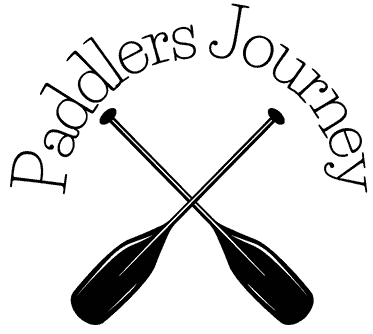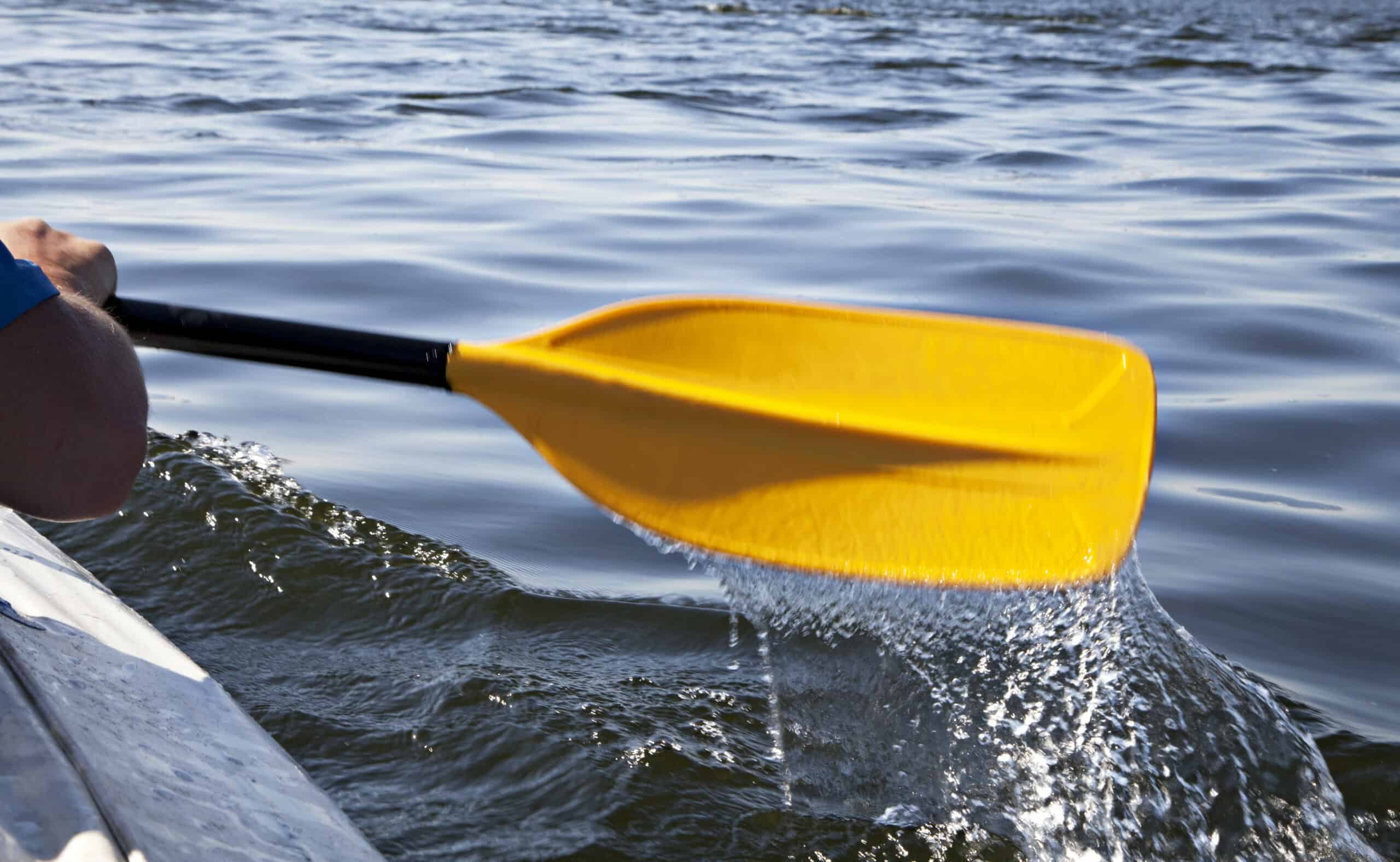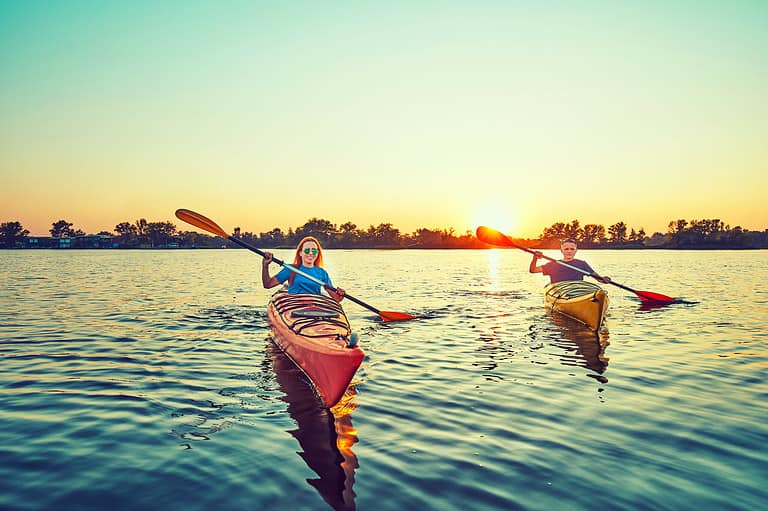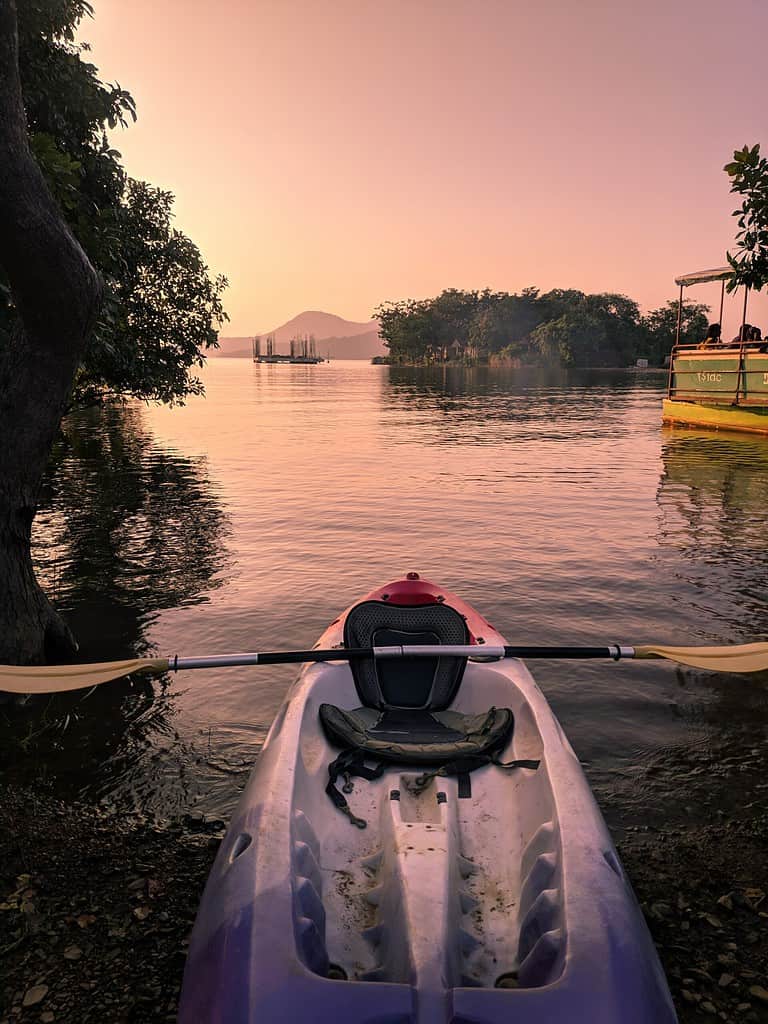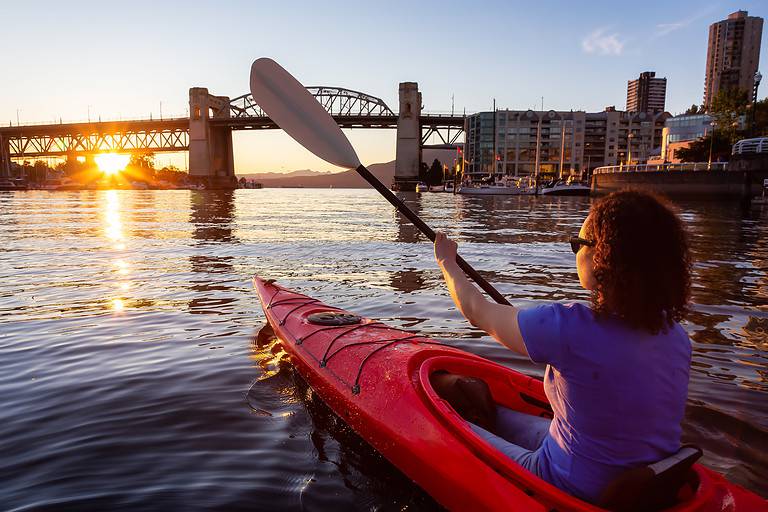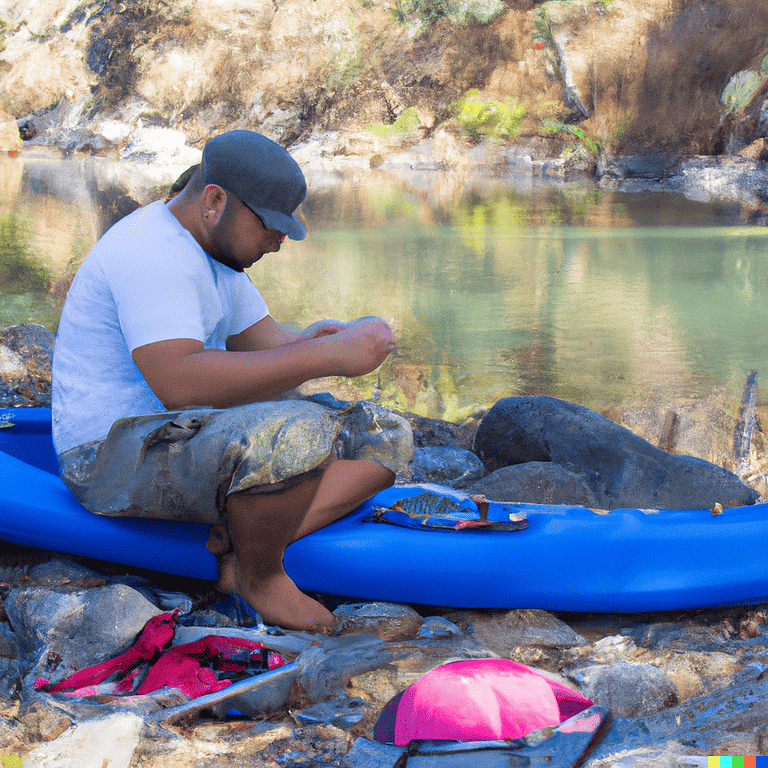Exploring Paddle Blade Shapes and Designs for Kayaking
Hello fellow paddlers! Today, we will exploring paddle blade shapes and designs and the world of kayak paddles. We’ll explore the various shapes, designs, and techniques that can enhance your paddling experience. So grab your life jacket, and let’s lets get out and enjoy the water!
Kayak Paddle Shapes: The Fundamentals
Consider the kayak paddle as the heart of your kayak. Much like how the heart pumps blood to different body parts for various functions, the kayak paddle propels your kayak differently based on its design.
Let’s take a moment to visualize a toolbox. Inside, you’ll find various tools, each with a unique purpose. There’s a hammer for nails, a screwdriver for screws, and a wrench for bolts. Each tool is designed specifically for its task, and using the right one could lead to efficiency or even damage. The same principle applies to kayak paddles.
Kayak paddles come in a myriad of shapes and sizes, each tailored for a specific type of kayaking. The basic flat paddle, for instance, is the jack-of-all-trades of kayak paddles. It’s versatile and easy to use, making it an excellent choice for beginners or casual paddlers.
On the other hand, more specialized paddle shapes, like the “wing” blades, are like the precision tools in your toolbox. They’re designed for specific tasks and can significantly enhance your performance in certain situations. For example, “wing” blades, with their unique, aerodynamic shape, are designed for high-speed, competitive kayaking. They provide extra lift and power with each stroke, much like how a plane’s wings provide lift for flight.
Understanding the basics of kayak paddle shapes is like knowing your way around a toolbox. It allows you to choose the right “tool” for your kayaking adventure, whether leisurely paddling around a calm lake or racing down a fast-moving river. So, the next time you pick up a kayak paddle, remember – it’s more than just a stick with blades. It’s a carefully designed tool that can make all the difference in your kayaking experience.

Symmetric vs. Asymmetric Kayak Paddles: The Mirror Image
Symmetric and asymmetric paddles are like twins with different personalities. Symmetric paddles are mirror-image twins – identical on both sides. They’re great for high-energy whitewater paddling, where power and control are key.
On the other hand, asymmetric paddles are fraternal twins. They’re not identical, but they share a lot of similarities. These paddles have one side more significant than the other, making them perfect for a more relaxed, low-angle stroke, ideal for long-distance touring.
Width & Length of Kayak Paddles: Tailoring Your Paddle to Your Journey
When it comes to kayak paddles, size truly does matter. The width and length of your paddle are akin to the size and fit of your shoes. Just as you wouldn’t wear oversized boots or tight sneakers, you wouldn’t want a too long or short paddle. The right fit can significantly enhance your performance and comfort on the water.
Let’s draw a parallel with running shoes. If you’re a sprinter, you’d opt for lightweight, snug-fitting shoes that allow quick, powerful movements. Similarly, short, wide paddles are the sprinting shoes of the kayaking world. They’re designed to give you a powerful, forceful stroke, making them perfect for situations where speed or quick maneuvers are required, such as navigating through rapids or around tight corners.
On the other hand, if you’re going for a long, leisurely walk, you’d want comfortable, supportive shoes that can sustain you over long distances. In the same vein, long, narrow paddles are the comfortable walking shoes of the kayaking world. They’re designed for slower, endurance-based strokes, ideal for long, leisurely paddles or multi-day kayaking trips. The longer length allows for a broader range of motion, while the narrower width makes each stroke less strenuous, helping you conserve energy over time.
Choosing the correct width and length for your kayak paddle is like finding the perfect pair of shoes. It’s not just about size but also how you intend to use it. Whether you’re sprinting through white-water rapids or embarking on a tranquil lake tour, a paddle size and shape are tailored for your journey. So take the time to find your perfect fit, and you’ll be well on your way to a more enjoyable and efficient kayaking experience.
Flat vs. Dihedral Kayak Paddles: The Flat Plains vs. The Mountain Ridge
Flat and dihedral paddles can be compared to a flat plain and a mountain ridge. Flat paddles are smooth, flat plain – simple, and straightforward. They’re great for beginners and provide a stable, easy-to-control stroke.
Dihedral paddles are like a mountain ridge with their ridge down the middle. They guide the water flow across the blade, reducing flutter and providing a smooth, stable stroke, much like how a mountain ridge guides the wind.
Curved vs. Spooned Kayak Paddles: Emulating Nature and Harnessing Power
When it comes to kayak paddles, the design isn’t arbitrary. Each shape is meticulously crafted to serve a specific purpose, much like the tools we use in everyday life. Let’s consider the curved and spooned paddles, which can be likened to a swimmer’s hand and a soup spoon, respectively.
Curved paddles are designed to emulate the shape of a swimmer’s hand slicing through the water. Picture an Olympic swimmer, their hand curved and fingers slightly spread, creating a cup shape to maximize their pull through the water. This is the principle behind the curved paddle. The curvature provides an early catch – the moment the paddle first contacts the water – and facilitates a powerful stroke. It’s like having the strength and precision of a professional swimmer at the end of your arms.
On the flip side, we have the spooned paddles. These paddles are reminiscent of a soup spoon, broad and concave. Think about the last time you scooped up a spoonful of soup. The spoon captured the liquid, allowing you to lift it without spilling. Similarly, a spooned paddle “scoops” the water, providing a robust and forceful stroke. This makes it perfect for high-energy, powerful paddling, where every stroke counts.
In essence, the design of kayak paddles – whether curved like a swimmer’s hand or spooned like a soup spoon – is a testament to human ingenuity. By observing and emulating the world around us, we’ve created tools that serve their purpose and enhance our performance and enjoyment of the sport. So, whether you’re gliding through calm waters or navigating turbulent rapids, remember that the shape of your paddle is more than just aesthetics – it’s a feat of design inspired by the world around us.
“Wing” Blades for Kayaks: Soaring Through the Water
Imagine a bird soaring high in the sky, its wings spread wide, cutting through the air with power and grace. Translate that image into kayaking, and you have the “wing” blade.
“Wing” blades are the avian acrobats of kayak paddles. They’re designed with high performance and racing in mind, embodying the same principles that allow a bird to fly. These blades’ unique, scoop-like design is reminiscent of a bird’s wing, hence the name.
The magic of the “wing” blade lies in its ability to provide lift and power. When a bird flaps its wings, it creates lift, allowing it to rise and glide through the air. Similarly, with its distinctive shape, the “wing” blade generates lift as it moves through the water. This lift translates into forward motion, propelling the kayak efficiently and quickly.
But it’s not just about speed. The “wing” blade also offers enhanced control and stability, much like how a bird can adjust its flight path by changing the angle of its wings. This makes the “wing” blade a favorite among racers, who need both speed and precision to navigate challenging race courses.
Essentially, the “wing” blade embodies a bird in flight – powerful, graceful, and designed for high-performance paddling. It’s a testament to the beauty of nature and the ingenuity of human design, coming together to create a paddle that genuinely lets you soar through the water.
“Greenland” Style Kayak Paddles: The Marathon Runners of the Sea
Picture a marathon runner. They’re lean, efficient, and built for the long haul. Now, apply that image to the world of kayak paddles, and you’ve got the “Greenland” style paddle.
These paddles are the endurance athletes of the kayaking world. Much like marathon runners, they’re designed for long distances and sustained effort. Their long, slender shape is a nod to the traditional paddles used by the Inuit people of Greenland, hence the name.
The design of the “Greenland” style paddle is a study of efficiency and elegance. They’re typically longer and narrower than other paddles, which might initially seem counterintuitive. After all, wouldn’t a wider paddle move more water and therefore provide more power? While that’s true, it’s also more tiring.
The beauty of the “Greenland” style paddle lies in its subtlety. The narrow blade requires less effort to pull through the water, allowing you to maintain a steady, rhythmic stroke for hours. This makes them perfect for long-distance touring or multi-day kayaking trips where conserving energy is critical.
But it’s not just about endurance. The “Greenland-style paddle is designed for a low-angle stroke, keeping the paddle relatively horizontal. This technique is less tiring on the shoulders and allows for a more relaxed, laid-back paddling style.
In essence, the “Greenland-style paddle is the marathon runner of kayak paddles – lean, efficient, and built for the long haul. It’s a testament to the timeless wisdom of the Inuit people, whose traditional paddle design continues to inspire and influence the kayaking world today.
Choosing the Right Kayak Paddle: Finding Your Perfect Match
Just as Cinderella found that the perfect fit could change her life, so can finding the right kayak paddle transform your paddling experience. It’s not just about picking up the first paddle you see. It’s about understanding your needs, your style, and your body.
Think of it like shopping for the perfect pair of shoes. You wouldn’t run a marathon in high heels, just as you wouldn’t wear flip-flops to hike up a mountain. Each shoe is designed for a specific purpose; the same goes for kayak paddles.
Firstly, consider the type of kayaking you’ll be doing. Are you planning on tackling white-water rapids, or are you more interested in a peaceful paddle across a calm lake? Are you planning a multi-day sea kayaking adventure? Each type of kayaking requires a different kind of paddle. For instance, white-water paddling often requires a sturdy, short, and wide paddle for quick, powerful strokes. At the same time, long-distance sea kayaking might call for a longer, narrower paddle designed for efficiency and less fatigue over time.
Secondly, take into account your physical strength and endurance. A larger, wider paddle might provide more power, but it can also be more tiring. If you’re a smaller person or new to kayaking, a smaller, lighter paddle might be a better fit.
Your personal preference also plays a significant role. Some people prefer the smooth, efficient stroke of a “Greenland” style paddle, while others might prefer the power and control of a “wing” blade. Choosing between running shoes and hiking boots can get you where you need to go, but the experience will be quite different.
Remember, the right paddle is not just about performance but also comfort. A paddle that’s too heavy can tire you out quickly, while a paddle that’s too long can be challenging to control. The right paddle will feel like an extension of your body, moving in harmony with your strokes and enhancing your connection with the water.
So take your time, research, and don’t be afraid to try out a few different styles. Finding the right kayak paddle is a journey, not a destination. And when you find your perfect match, you’ll know it – just like Cinderella did when she slipped on that glass slipper.
Kayak Paddling Techniques: The Dance Moves
Paddling techniques are like dance moves. They need to be smooth, coordinated, and efficient. From the forward stroke to the sweep stroke, each technique serves a purpose and can help you navigate the water with ease and control.
Summary
In kayaking, the paddle is your engine, your dance partner, and your guide. Understanding the different paddle shapes and designs is essential to find the one that fits you and your paddling style. From the basic shapes to the more specialized designs, each paddle serves a unique purpose and can enhance your paddling experience.
FAQ
Q: What is the difference between symmetric and asymmetric kayak paddles? A: Symmetric paddles are identical on both sides and are great for high-energy whitewater paddling. Asymmetric paddles have one side larger than the other and are perfect for a more relaxed, low-angle stroke.
Q: How do the width and length of a kayak paddle affect its performance? A: Short, wide paddles provide a robust, forceful stroke, perfect for speed or quick maneuvers. Long, narrow paddles are designed for slower, endurance-based strokes, ideal for long, leisurely paddles.
Q: What are “wing” blades and “Greenland” style paddles? A: “Wing” blades are designed for high-performance, racing paddling. They provide lift and power. “Greenland” style paddles are long, narrow, and designed for a low-angle stroke, making them perfect for long-distance, endurance paddling.
Q: How do I choose the right kayak paddle? A: Consider the type of kayaking you’ll be doing, your physical strength, and your preference. The right paddle can make your kayaking experience more enjoyable and less tiring.
Q: What are some basic kayak paddling techniques? A: Some basic paddling techniques include the forward, reverse, and sweep strokes. Each technique serves a purpose and can help you navigate the water with ease and control.
